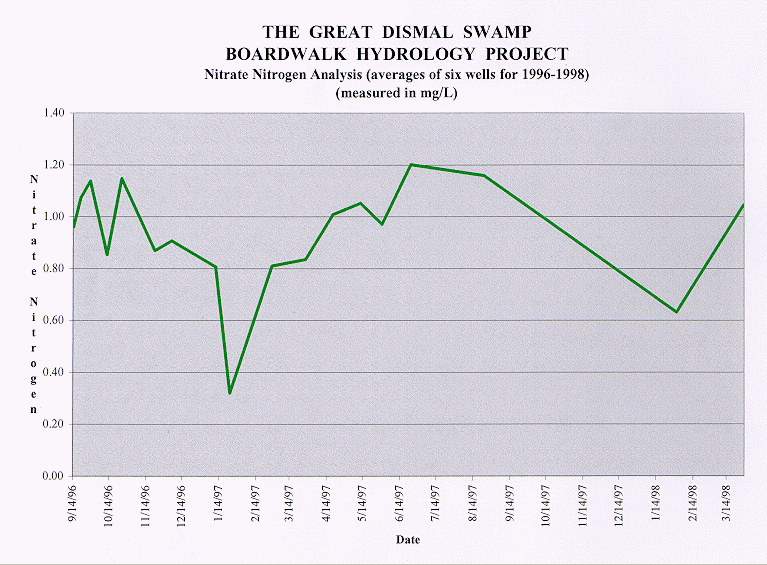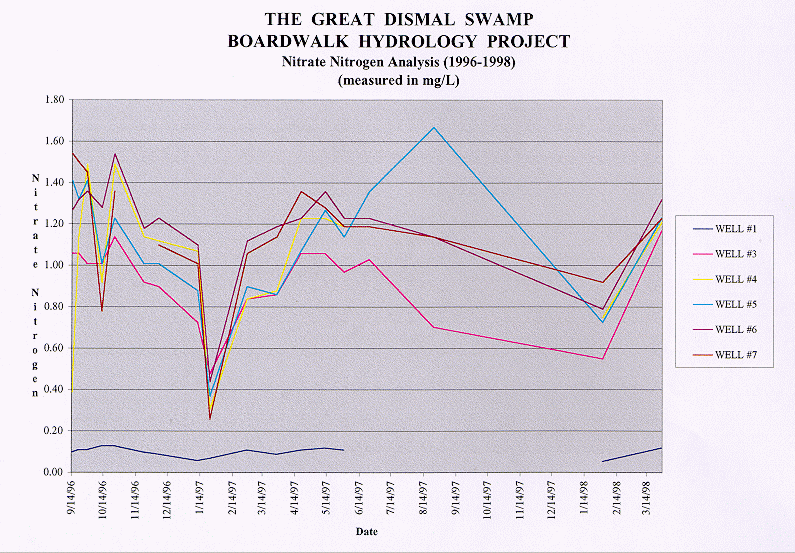
The nitrate nitrogen levels of the swamp's water changes seasonally,
as can be seen from the graphs included in this report. During the
fall months, the level of nitrate nitrogen ranges from about 1.0 to 1.6 mg/L
and continues to decline into winter. I believe one of the causes of
this decline is that the water is evaporating less (because of the
cooler temperatures) and the level of transpiration is much lower
due to the fact that plants are less active during cooler fall and
winter months than the warmer spring and summer months. These lower
rates of evaporation and transpiration cause the nitrate nitrogen
levels to be less concentrated. As the temperature rises (in spring
and summer) the water evaporates more quickly and the plants are more
active, thus causing more water to be released through transpiration.
The water levels drops and the levels rise becoming more concentrated.
I just mentioned that plants' activities are more during warm months
than the cool months. Animals, as you already know, are also more
active when it is warmer. Since animals are more active during
warmer seasons, it is reasonable to say that they eat more and also
defecate more. The increase of defecation (Feces is rich in nitrogen.)
also affects the levels of nitrate nitrogen in the Great Dismal Swamp's
water.
Another reason for the rise of the nitrate nitrogen levels in the
water during the warmer seasons is due to human influences. According
to The Global Water Cycle, "human influences are probably responsible
for about 50% of the total fixed nitrogen input to land (polluted
land plus fertilizers)." (We all know farmers fertilize their crops
during the warm months, so be sure to look for spikes on the graphs
at typical fertilization periods.) Since these pollutants and
fertilizers run off into rivers (and wetlands act as filters to the
estuaries near the rivers) it seems plausible that this is (at least
partially) responsible for the increase of the nitrogen nitrate levels
during the spring and summer (Berner 1987).
Also, we must take into account that bacteria (which break down plant
and animal material) are more active during the warmer seasons than
the cooler ones. They are also considered to be responsible for the
changes in the levels of nitrate nitrogen.

